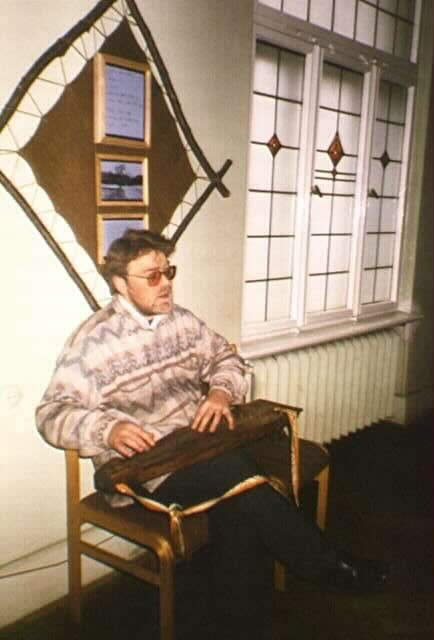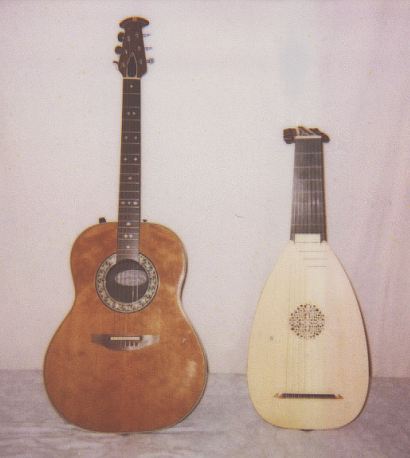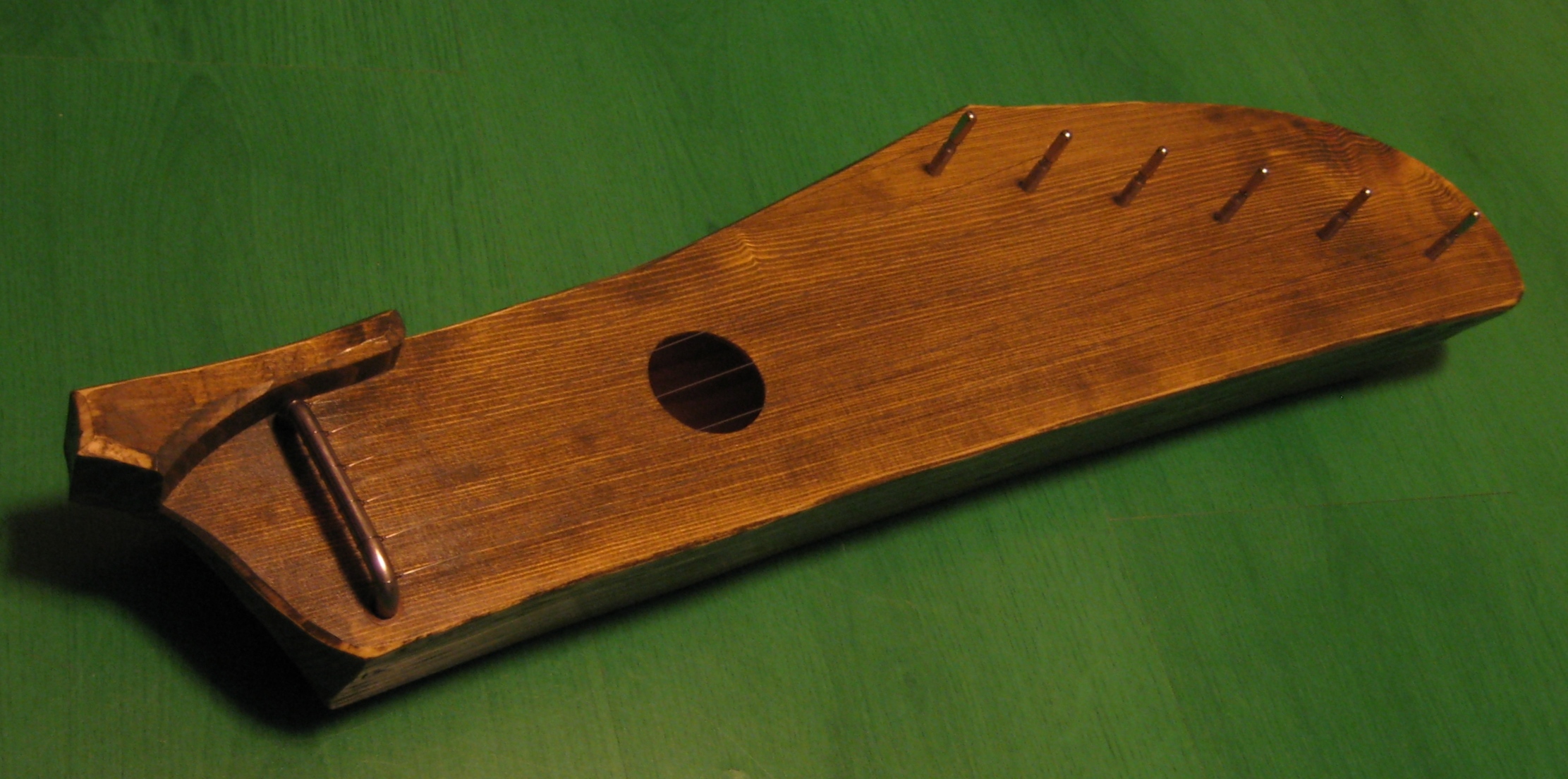|
Kokles
Kokle (; ltg, kūkle) or historically kokles (''kūkles'') is a Latvian plucked string instrument (chordophone) belonging to the Baltic box zither family known as the Baltic psaltery along with Lithuanian kanklės, Estonian kannel, Finnish kantele, and Russian krylovidnye gusli. The first possible kokles related archaeological findings in the territory of modern Latvia are from the 13th century, while the first reliable written information about kokles playing comes from the beginning of the 17th century. The first known kokles tune was notated in 1891, but the first kokles recordings into gramophone records and movies were made in 1930s. Both kokles and kokles playing are included in the Latvian Culture Canon. Etymology According to Finnish linguist Eino Nieminen, the name of the instrument, along with the names of most of its neighbouring counterparts (Lithuanian ''kanklės'', Finnish ''kantele'', Estonian ''kannel'' and Livonian ''kāndla''), possibly comes from the p ... [...More Info...] [...Related Items...] OR: [Wikipedia] [Google] [Baidu] |
Valdis Muktupāvels
Valdis Muktupāvels (9 November 1958 in Līvāni) is a Latvian ethnomusicologist, composer, musician, teacher and doctor of art criticism. Muktupāvels graduated 1980 from the University of Latvia and acquired a specialty in chemistry in 1983. He completed the Jāzeps Vītols Latvian Academy of Music in 1996 with a doctorate in art criticism. Muktupāvels has worked for the University of Latvia since 1989; since 1999 at the Art History and Philology Faculty, and since 2002 as a professor. Muktupāvels has been a member of the Latvian National Cultural Council since 2002. He is a pioneer in the revival of traditional instruments in Latvia, and has performed in many countries in Europe, North America, and countries like Australia, India and Japan. He was also the founder and director of the folklore ensemble Rasa, which was active from 1988 to 1998. Muktupāvels is a Magnus Ducatus Poesis participant. Muktupāvels was awarded the Knight's Cross of the Order of the Lithuanian Gra ... [...More Info...] [...Related Items...] OR: [Wikipedia] [Google] [Baidu] |
Plucked String Instrument
Plucked string instruments are a subcategory of string instruments that are played by plucking the strings. Plucking is a way of pulling and releasing the string in such a way as to give it an impulse that causes the string to vibrate. Plucking can be done with either a finger or a plectrum. Most plucked string instruments belong to the lute family (such as guitar, bass guitar, mandolin, banjo, balalaika, sitar, pipa, etc.), which generally consist of a resonating body, and a neck; the strings run along the neck and can be stopped at different pitches. The zither family (including the Qanún/kanun, autoharp, kantele, gusli, kannel, kankles, kokles, koto, guqin, gu zheng and many others) does not have a neck, and the strings are stretched across the soundboard. In the harp family (including the lyre), the strings are perpendicular to the soundboard and do not run across it. The harpsichord does not fit any of these categories but is also a plucked string instrument, as its ... [...More Info...] [...Related Items...] OR: [Wikipedia] [Google] [Baidu] |
Baltic Psaltery
Baltic psaltery is a family of related plucked box zithers, psalteries, historically found in the southeast vicinity of the Baltic Sea and played by the Baltic people, Baltic Finns, Volga Finns and northwestern Russians. Types Baltic psalteries include: * Kanklės (Lithuania) * Kantele (Finland, Karelia and Northwest Russia) * Kannel (Estonia) * Kāndla (Livonian people of Northwest Latvia) * Kokles (Latvia) * Krez (Udmurt people of Central Russia) * Krylovidnye gusli (Northwest Russia) * Kusle (Mari people of Central Russia) * Harpu (Sápmi) The internationally most known instrument of the family is Finnish kantele, so its name is sometimes used in English to also refer to other Baltic psalteries as well. Many of the Baltic psalteries hold a strong symbolic significance in their respective countries, including Finland, Latvia, Lithuania, Estonia and Russia, where playing instruction and instrument makers are available. Etymology According to Finnish linguist Eino Niem ... [...More Info...] [...Related Items...] OR: [Wikipedia] [Google] [Baidu] |
Kanklės
Kanklės () is a Lithuanians, Lithuanian plucked string instrument (chordophone) belonging to the Baltic region, Baltic box zither family known as the Baltic psaltery, along with the Latvian kokles, Estonian kannel (music), kannel, Finnish kantele, and Russian gusli. Etymology According to Finnish linguist Eino Nieminen, the name of the instrument, along with the names of most of its neighbouring counterparts (Latvian ''kokles'', Finnish ''kantele'', Estonian ''kannel'' and Livonian ''kāndla''), possibly comes from the proto-Baltic form ''*kantlīs''/''*kantlēs'', which originally meant 'the singing tree', most likely deriving from the Proto-Indo-European language, Proto-Indo-European root ''*qan-'' ('to sing, to sound'; cf. Latin "canto, cantus, canticum", Italian "cantare", French "chanter", English "chant, cantor"). A Lithuanian ethnologist Romualdas Apanavičius believes ''Kanklės'' could be derived from the Proto-European root ''*gan(dh)-'', meaning 'a vessel; a haft ... [...More Info...] [...Related Items...] OR: [Wikipedia] [Google] [Baidu] |
Kanklės
Kanklės () is a Lithuanians, Lithuanian plucked string instrument (chordophone) belonging to the Baltic region, Baltic box zither family known as the Baltic psaltery, along with the Latvian kokles, Estonian kannel (music), kannel, Finnish kantele, and Russian gusli. Etymology According to Finnish linguist Eino Nieminen, the name of the instrument, along with the names of most of its neighbouring counterparts (Latvian ''kokles'', Finnish ''kantele'', Estonian ''kannel'' and Livonian ''kāndla''), possibly comes from the proto-Baltic form ''*kantlīs''/''*kantlēs'', which originally meant 'the singing tree', most likely deriving from the Proto-Indo-European language, Proto-Indo-European root ''*qan-'' ('to sing, to sound'; cf. Latin "canto, cantus, canticum", Italian "cantare", French "chanter", English "chant, cantor"). A Lithuanian ethnologist Romualdas Apanavičius believes ''Kanklės'' could be derived from the Proto-European root ''*gan(dh)-'', meaning 'a vessel; a haft ... [...More Info...] [...Related Items...] OR: [Wikipedia] [Google] [Baidu] |
Krylovidnye Gusli
''Gusli'' ( rus, гусли, p=ˈɡuslʲɪ) is the oldest East Slavic multi-string plucked instrument, belonging to the zither family, due to its strings being parallel to its resonance board. Its roots lie in Veliky Novgorod in Novgorodian Rus'. It may have a connection to the Byzantine form of the Greek kithara, which in turn derived from the ancient lyre, or might have been imported from Western and Central Europe during the Middle Ages, when the zither had immense popularity. It has its relatives in Europe and throughout the world: kantele in Finland, kannel in Estonia, kanklės in Lithuania, kokles in Latvia, Zither in Germany, citera in the Czech Republic, psalterium in France and so on... Furthermore, the kanun has been found in Arabic countries, and the autoharp, in the United States. It is also related to such ancient instruments as Chinese gu zheng, which has a thousand-year history, and its Japanese relative koto. A stringed musical instrument called is listed a ... [...More Info...] [...Related Items...] OR: [Wikipedia] [Google] [Baidu] |
Gusli
''Gusli'' ( rus, гусли, p=ˈɡuslʲɪ) is the oldest East Slavic multi-string plucked instrument, belonging to the zither family, due to its strings being parallel to its resonance board. Its roots lie in Veliky Novgorod in Novgorodian Rus'. It may have a connection to the Byzantine form of the Greek kithara, which in turn derived from the ancient lyre, or might have been imported from Western and Central Europe during the Middle Ages, when the zither had immense popularity. It has its relatives in Europe and throughout the world: kantele in Finland, kannel in Estonia, kanklės in Lithuania, kokles in Latvia, Zither in Germany, citera in the Czech Republic, psalterium in France and so on... Furthermore, the kanun has been found in Arabic countries, and the autoharp, in the United States. It is also related to such ancient instruments as Chinese gu zheng, which has a thousand-year history, and its Japanese relative koto. A stringed musical instrument called is listed as ... [...More Info...] [...Related Items...] OR: [Wikipedia] [Google] [Baidu] |
Kannel (music)
Kannel () is an Estonian plucked string instrument (chordophone) belonging to the Baltic box zither family known as the Baltic psaltery along with Finnish kantele, Latvian kokles, Lithuanian kanklės, and Russian gusli. The Estonian kannel has a variety of traditional tunings. In Estonia, studying the kannel has made a resurgence after some years of decline. (in Estonian) Etymology According to Finnish linguist Eino Nieminen, the name of the instrument, along with the names of most of its neighbouring counterparts (Finnish ''kantele'', ...[...More Info...] [...Related Items...] OR: [Wikipedia] [Google] [Baidu] |
Gramophone Record
A phonograph record (also known as a gramophone record, especially in British English), or simply a record, is an analog sound storage medium in the form of a flat disc with an inscribed, modulated spiral groove. The groove usually starts near the periphery and ends near the center of the disc. At first, the discs were commonly made from shellac, with earlier records having a fine abrasive filler mixed in. Starting in the 1940s polyvinyl chloride became common, hence the name vinyl. The phonograph record was the primary medium used for music reproduction throughout the 20th century. It had co-existed with the phonograph cylinder from the late 1880s and had effectively superseded it by around 1912. Records retained the largest market share even when new formats such as the compact cassette were mass-marketed. By the 1980s, digital media, in the form of the compact disc, had gained a larger market share, and the record left the mainstream in 1991. Since the 1990s, records con ... [...More Info...] [...Related Items...] OR: [Wikipedia] [Google] [Baidu] |
Eino Nieminen
Eino is a Finnish and Estonian masculine given name. The name is thought to be the Finnic form of the given name Henri. Both Finnish and Estonian languages belong to the Finno-Ugric language group through their being Uralic languages.Language relationships are from other Wikipedia articles. Another possible origin of the name is the German Enewald (Aginwald). People with the given name Eino include: * Eino Forsström (1889–1961), Finnish gymnast *Eino Friberg (1901–1995), Finnish-American writer * Eino Hanski (1928–2000), Swedish-Finnish-Russian-Karelian author, dramatist and sculptor *Eino Heino (1912–1975), Finnish cinematographer * Eino Rudolf Woldemar Holsti (1881–1945), Finnish politician, journalist and diplomat * Antti Eino Juntumaa (born 1959), Finnish boxer *Eino Jutikkala (1907–2006), Finnish historian * Eino Ilmari Juutilainen (1914–1999), Finnish Air Force fighter pilot *Eino Kaila (1890–1958), Finnish philosopher, critic and teacher * Eino Kuvaja ... [...More Info...] [...Related Items...] OR: [Wikipedia] [Google] [Baidu] |
Latvian Culture Canon
The culture of Latvia combines traditional Latvian and Livonian heritage with influences of the country's varied historical heritage. History The area of Latvia has been inhabited since 9000 BC. Baltic tribes, the ancestors of present-day Latvians, arrived around 3000 BC. In the 13th century after the conquest of today's Latvia, Baltic Germans settled here and gradually became the upper class and rulers of Latvia, while Latvians and Livonians lost their positions finally becoming serfs in the 16th century. This caused the Germanisation of the educated inhabitants of other nationalities, yet preserved some local traditions. In the 19th century, when serfdom was abolished, a Latvian nationalist movement, the First Latvian National Awakening, begun. Led by " Young Latvians", it encouraged Latvians to become artists and scholars, while preserving their cultural heritage and the language. The movement was countered by a period of Russification, followed by the leftist movemen ... [...More Info...] [...Related Items...] OR: [Wikipedia] [Google] [Baidu] |
Baltic Region
The terms Baltic Sea Region, Baltic Rim countries (or simply the Baltic Rim), and the Baltic Sea countries/states refer to slightly different combinations of countries in the general area surrounding the Baltic Sea, mainly in Northern Europe. The term " Baltic states" refers specifically to one such grouping. Etymology The first to name it the ''Baltic Sea'' ( la, Mare Balticum) was 11th century German chronicler Adam of Bremen. Denotation Depending on the context the ''Baltic Sea Region'' might stand for: * The countries that have shorelines along the Baltic Sea: Denmark, Estonia, Finland, Germany, Latvia, Lithuania, Poland, Russia, and Sweden. * The group of countries that are members of the inter-governmental ''Baltic Assembly'' and ''Baltic Council of Ministers'', and generally referred to by the shorthand, Baltic states: Estonia, Latvia, and Lithuania. * Estonia, Latvia, Lithuania and Kaliningrad Oblast of Russia, exclaved from the remainder of Russia.«The Balt ... [...More Info...] [...Related Items...] OR: [Wikipedia] [Google] [Baidu] |







